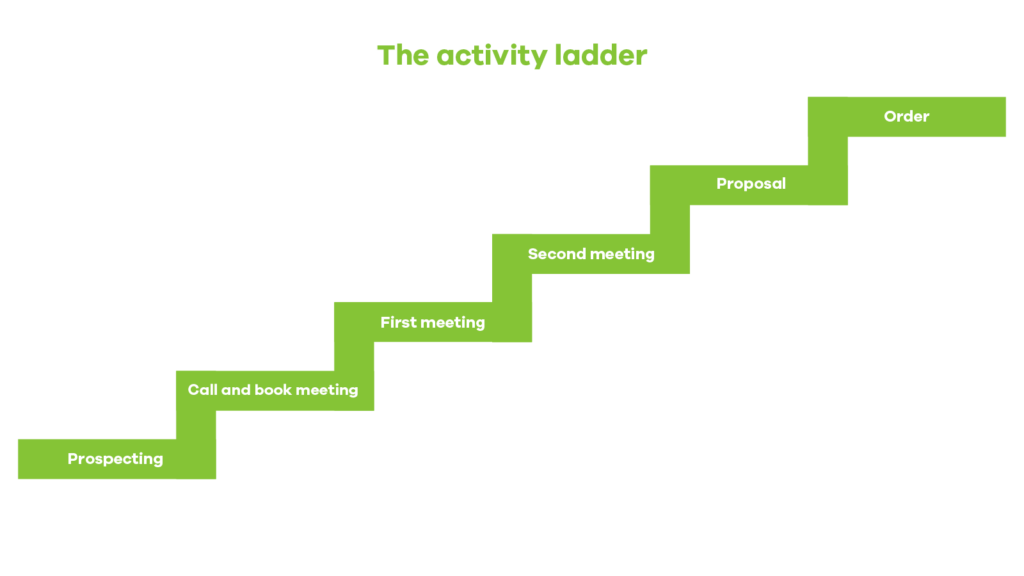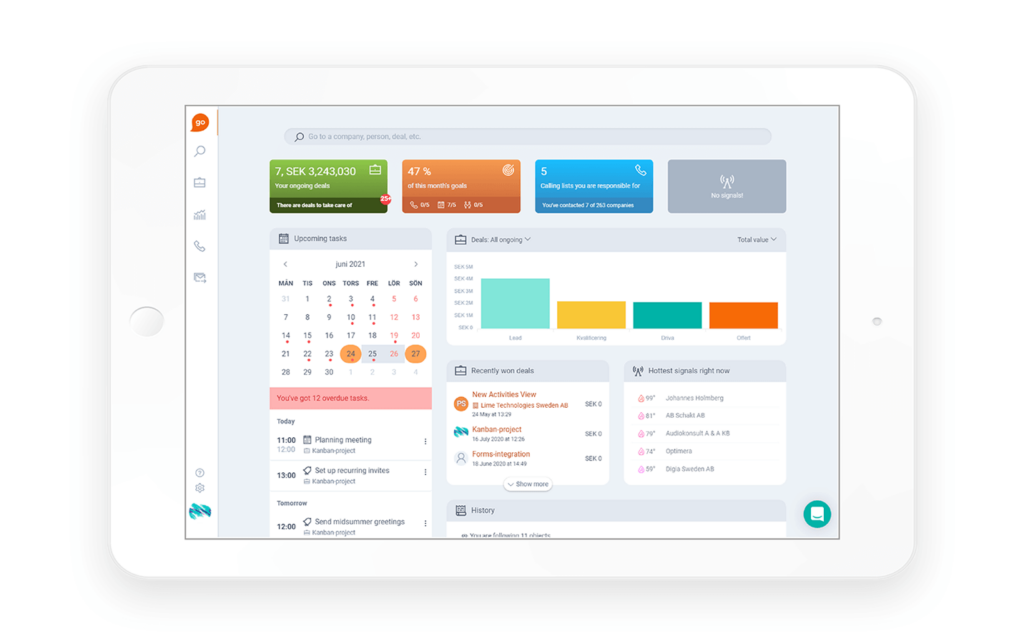Prospecting that will catch your dream customers

When was the last time you had a meaningful conversation? You know, when the conversation just flows, and you feel like the other person truly gets you.
Not all B2B sales calls lead to deep and meaningful discussions. But if you have a plan for your prospecting, you significantly increase the chance of successfully catching your dream prospect.
Without a strategy how to find new customers, prospecting will take a lot of time. It’s like finding a needle in a haystack: There are always customers to call, but where is the closing deal?
What does prospecting mean within sales?
The work of a sales rep includes, of course, more than just calling customers and closing deals. Prospecting within sales is a process with the goal to find your ideal customers. Since it is your job to find the right customers to get in contact with.
Are you trying to sell to the public or private sector? Today, there are over 3 million different companies in the Nordics. If we remove the ones with less than 10 employees, there are still 48 000 companies left.
But are all these companies a potential prospect? Probably not. To prospect smart, you require more than just the right contact information. You need to create a profile for who your ideal customer is.
Who is your ideal customer?
Who your ideal customers is can depend on two things: The customer’s situation and your knowledge of expertise. Of course, it would be great to be able to sell anything to anyone. But the truth is that the more knowledge you have in a particular area, the greater the chance of you bringing home the deal. Who is interested in what you offer? And why?
When you figure that out, finding new customers will become much easier. It may seem contradictory: The more I call, the more closed deals, right? No, that is not quite true!
The truth is, the better you know your customers, the easier it gets for you to find more potential customers who are ready to do business with you. This is also where you find the secret to successful prospecting.
What is the difference between a prospect and a lead?
A prospect is a potential customer that matches the profile of your ideal customer. A lead is a person who have shown an interest in your business’ products or services.
Leads can be collected via various activities, such as your website, an event or social media. It can be a contact request via a form, a downloaded product sheet or a seminar participation.
That’s why a good collaboration between sales and marketing is a crucial factor for success when following up on incoming leads. Have you checked with the marketing team? They can probably share insights on what your prospects are actually looking for.
63% of sales in B2B includes at least four decision makers
During the time you are trying to close the deal, your customer has probably involved some of their colleagues in the decision making. A study by Forrester shows that 63% of all sales within B2B involves more than 4 people in a company.
So how do you as a sales rep know who to talk to? It requires that you keep a close eye on both the customer journey and the sales process.
Find new customers faster with a prospecting tool
Finding new customers takes time. Especially if you don’t have a strategy for it. With the right prospecting tool, the process can get much more efficient! Here are 3 examples of why you should use a tool for your prospecting:
1. Actual data with updated company information
Stop collecting customer information in different documents and excel files. Instead, easily get the right information of your potentional customers in the prospecting tool. The tool allows you to see company information such as:
- Financial information e.g. sales, profit margins and earnings
- Type of company, number of employee and industry
- Geographical information based on municipality, country, and visitor address.
2. From segmentation to calling list in no time
Collect all your potential prospects in calling lists. Segment a list of your ideal customers based on sales, industry, company size or other company information directly in the prospecting tool. Then you just start calling! You can then easily follow the sale development step by step directly in the tool.
3. Does your dream prospect have a twin?
With a prospecting tool, you can easily find new companies that are in many ways similar to your ideal customers. When you use Lime Go, all you have to do is type in the name of a customer, and viola! You get a complete list with potential prospects that match your ideal customers.
Razor-sharp prospecting with dynamic customer data
To find the right customer, you need to segment your database. It requires that you have the right data in the right place. This is where a prospecting tool comes into play.
Start with asking yourself: Do my customers have something in common?
It’s common to segment the customer database based on:
- Number of employees
- Revenue
- Private or public sector
- Industry
- The position of the person whom you are in contact with
- Signals of purchase, such as incoming leads
When you have access to dynamic customer data, the segmentation only takes a couple of clicks. This is because the customer data base is continually updated, which gives you real time insights that many other sales reps don’t have.
Let’s rewind the tape and take a look on what you have to bring to the table. What are your strengths in the selling process? It’s time to match the customer’s level of knowledge and interest with the right steps in the sales process.
Account scoring will help you prioritise
Of course you want to know which customers that are more valuable. With the help of account scoring, you can estimate every customer’s value.
Becoming best friends with a customer doesn’t guarantee that they will stay with you as a customer. Keep an eye on the company data to find the customers with the highest possibility to increase your sales both in the short term and long term.
In the past, sales departments often talked about qualifying leads. It’s almost like account scoring, with the exception that in this context, account stands for the entire business. It is thus not an individual lead you qualify, but the entire customer account.
Account scoring is not a mathematical equation that can magically give you the answer to were to find hidden gems within your prospects. But what it does is that it saves you time and energy by automatically sort out the prospects that aren’t ready to take the next step of sealing the deal.

Would you like to automate your prospecting?
Clear out contacts that are unlikely to lead to a deal. Only work with the prospects that match the profile of your ideal customer. Is it even possible? Yes, when you prospect with Lime Go, you can search for information among more than one million Swedish companies. Find new customers faster – try the tool for free for 48 hours!

Do you want better prospecting?
There’s no time to waste! Let’s find the solution that will help you get more customers and turn existing ones into loyal ambassadors today.